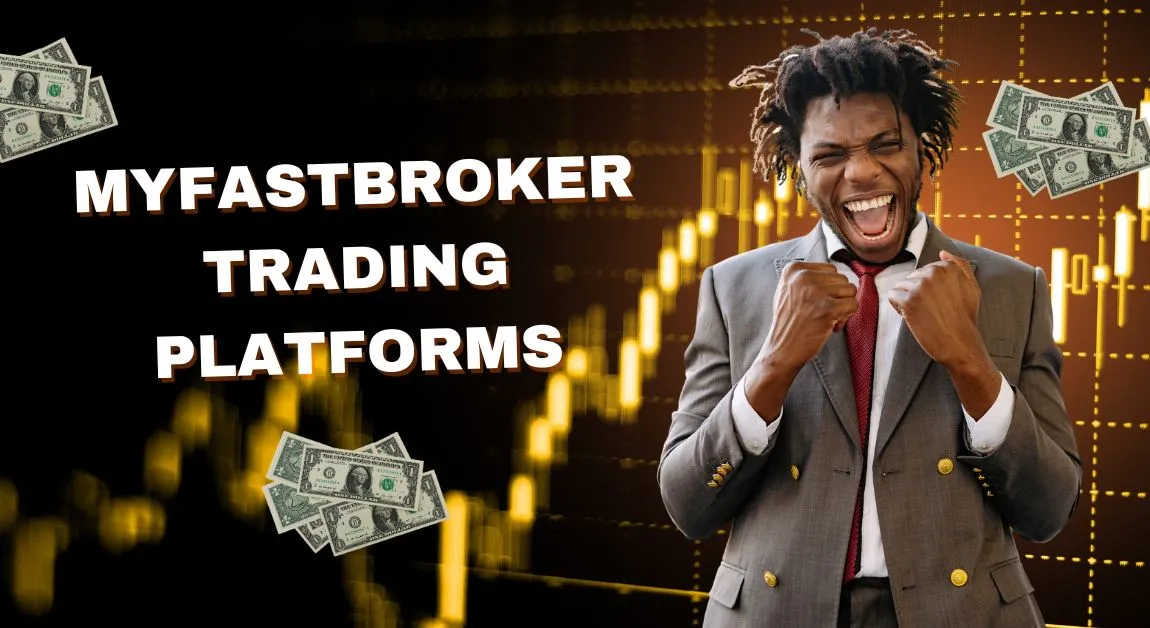MyFastBroker offers a variety of trading platforms for investors. They have options for both beginner and experienced traders. Their platforms make it easy to keep track of stock prices and place trades. Some of the platforms available are MyFastBroker Desktop and MyFastBroker Mobile.
The desktop platform can be used on computers. It provides charts and tools for technical analysis. Traders can see live price quotes and market depth on their screen. MyFastBroker Mobile allows trading from a smartphone or tablet. This lets investors watch the market and make moves wherever they are. Both platforms offer simple navigation and placement of trades with just a few taps or clicks.
[ez-toc]
MyFastBroker’s Web-Based Platform
The web-based platform provides a simple way to trade from any internet-connected device. It has a clean and straightforward interface that is easy to understand, even for beginners. The platform works across all major desktop and mobile browsers on devices like computers, phones and tablets.
Traders can access their account and place trades anywhere there is an internet connection. The interface makes placing trades just a few clicks away. Users will see charts and quotes on the screen to make informed decisions. Some key features include customizable workspaces, built-in market news and research, and the ability to set price alerts and watchlists.
However, the web platform may be more limited than desktop applications. Things like advanced charting, hotkeys and faster order execution are not available. But it offers a low-barrier entry into online trading.
MyFastBroker’s Desktop Application
The desktop application provides traders with more power and tools compared to the web platform. It can be downloaded and installed on Windows and Mac operating systems. The minimum requirements are a relatively new computer with at least 4GB of RAM. Installation is simple and only takes a few minutes.
Once installed, traders gain access to numerous charting options and studies. They can utilize hotkeys to place trades faster. The desktop app allows more data to be viewed simultaneously with customizable layouts. Charts are highly interactive and can be layered. Traders can automate strategies with scripting.
Other features for professionals include direct market access for lower-latency trading and advanced order types like brackets. Users can refine the experience through settings for colors, sounds and more. The desktop platform turns PCs into powerful trading stations.
MyFastBroker’s Mobile App
The mobile app allows on-the-go trading from smartphones and tablets. It is available for both iPhone/iPad through the Apple App Store and Android devices via Google Play. The interface is tailored for smaller screens with easy navigation. Basic watchlists, charts and quotes are displayed in a clean layout.
Some unique mobile features include the ability to monitor accounts through push notifications. Traders can opt-in to alerts for price movements, news and order updates on their device. Since the screen is more limited than desktop, certain tools like advanced scanning are not available.
However, the speed of placing trades is prioritized. Trades execute as quickly as with the desktop platform. Overall it provides a convenient way to stay on top of the market anywhere. While the web platform lets any device trade, the dedicated app has a more polished experience optimized for mobile use.
www.vital-mag.net Blog: Why is The Website Gaining So Much Traction
Trading Tools and Features Across Platforms
- Charting tools and technical indicators: All platforms provide interactive charts with drawings, patterns and studies like MACD, RSI and moving averages. Advanced versions allow custom scripts and indicators.
- Order types and execution: Basic options like market, limit and stop orders are available on all. Professional platforms add conditional orders and algorithms. Mobile aims to match desktop speed.
- Real-time market data and news feeds: Live quotes, depth of book, and breaking news integrate across platforms. Professional platforms offer more granular data types and direct market access.
- Risk management tools: Position sizing, profit/loss calcs, and configurable stop losses help manage risk. Professionals benefit from algorithmic hedging strategies and margin tools.
Pricing and Fees
- Commission structures: Commissions are $0 per trade on stocks/ETFs under $5 per share. Above that is $5 per trade. Options are $1 per contract.
- Platform fees: The web and mobile platforms are free to use. The desktop version has a $10 monthly fee.
- Hidden costs: There are no inactivity fees or minimum account balances. Regulatory fees apply on all trades as mandated.
- Comparison to competitors: Commission fees are average for discount brokers. Platform pricing is cheaper than some robo-advisors or active trader platforms that charge over $100/month. Overall, costs provide a well-priced solution for occasional or retail investors.
Pros and Cons of MyFastBroker Platforms
Pros:
- Available across all devices for flexible access
- Clean, intuitive interfaces are user-friendly for beginners
- Range of tools from simple to advanced for different experience levels
- Competitive pricing for regular retail trading needs
- Educational resources available online and through the apps
Cons:
- Missing some pro features like advanced order types or APIs
- Execution speed could be faster for very active traders
- No phone calls or live support, just online help center
- Desktop software only runs on Windows/Mac, not Linux
- Mobile app layout takes more taps than some competitors
Comparison with Other Major Trading Platforms
- Fidelity, Schwab, E*Trade – Established full-service brokers with decades of experience but higher monthly platform fees of $30-100.
- Robinhood – Very low cost commissions but fewer advanced tools than MyFastBroker. Interface geared towards new traders.
- TD Ameritrade – Similar breadth of tools as MyFastBroker but higher $10/month platform fee.
- Interactive Brokers – Geared towards professionals/institutions with low per-trade fees but steeper monthly platform fees.
- TradeStation – More advanced features than MyFastBroker for high-frequency/algo trading but much higher costs.
- Ally Invest – Competitive commissions and no platform fees like MyFastBroker but fewer desktop/web-based tools.
- SoFi – Similar commissions to MyFastBroker but focuses more on banking/loans than robust platforms.
Conclusion
In conclusion, MyFastBroker offers a variety of platforms that are suitable for different types of traders, from beginners to professionals. The low-cost mobile and web platforms provide the basic features needed to get started without complexity. Meanwhile, the feature-rich desktop platform opens up powerful analytics for advanced users.
Across all platforms, MyFastBroker emphasizes usability with clean, intuitive interfaces. Educational resources are also easily accessible. Pricing is competitively low for average retail investors. If you need more info regarding this then visit this page.

